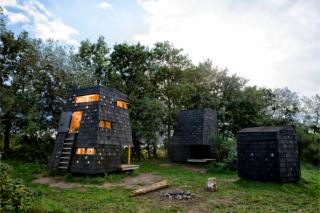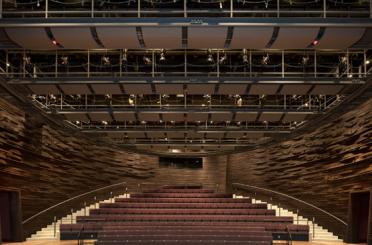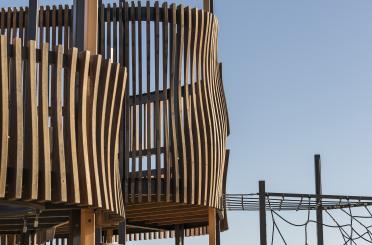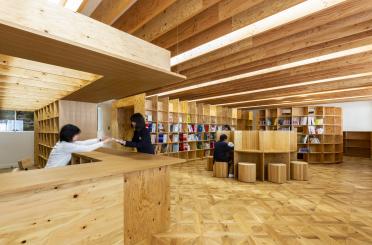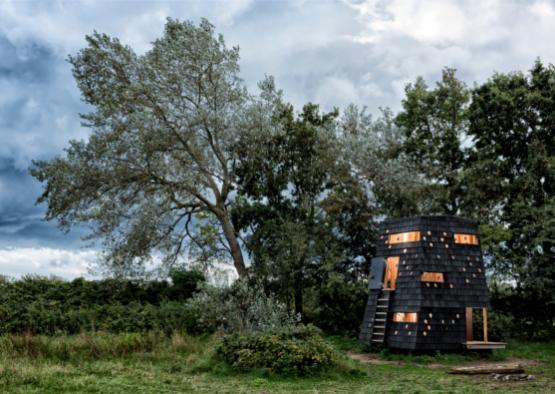
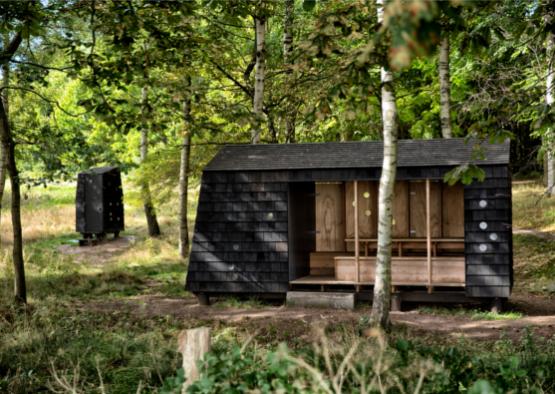
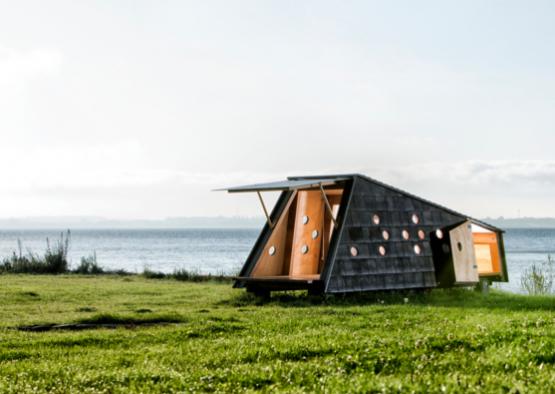
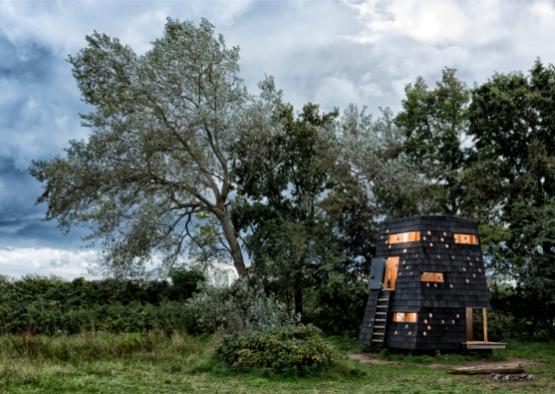
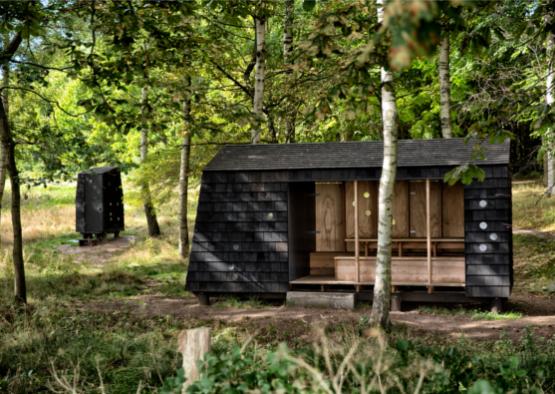
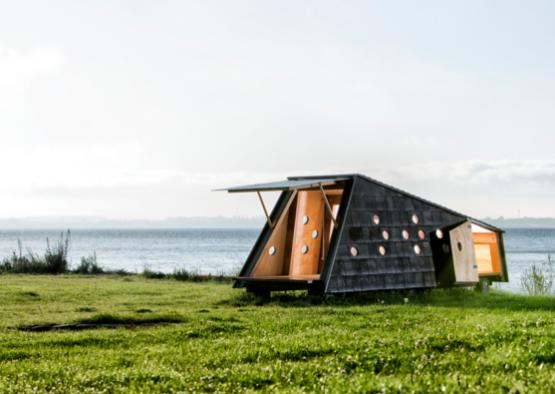
Overview
Located on the pristine South Fyn Archipelago in Denmark, the Blue Landmarks provide shelter to sightseers, fishers, adventurers and holiday makers. The fifty shelters are scattered over nineteen separate locations and provide year-round access to the archipelago, the ocean and the natural environment, all of which provide a home to large numbers of endemic birdlife.
The sensitive nature of the location for the shelters required for LUMO Architects to obtain Coastal Protection Zone waivers from the Ministry of Environment. Each of the nineteen locations were carefully chosen to impact as little as possible on the area while also providing the maximum usefulness to the water-sportspeople, hikers, picnickers and school groups that will use them.
Structure
The fifty shelter are built in five different structures, with each serving a distinct purpose and being named after fish that are commonly caught in the area. The Monkfish has three levels and intergrates a bird-watching platform. The Garfish is an overnight retreat that can house up to seven people and also provides a picnic space for larger groups. The Lumpfish and Flounder are smaller overnight shelters, with the Lumpfish also incorporating a sauna, and the Eelpout provides the lavatory facilities.
The structures are not meant to function alone, and are scattered in groups along the archipelago to create spaces that are all unique in their layout to complement the uniqueness of their surrounding habitats. However, the simplicity of the designs and the homogeneity of their appearances makes the small groupings still feel connected to each other.
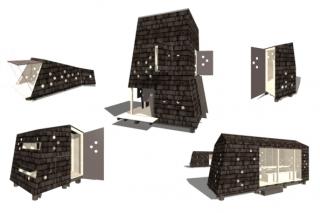
Exterior
The buildings are clad in with large wood chips that have been treated with black-pigmented wood tar oil, giving them a unique dark steel-like colouration. Their slightly skewed lines create triangles and trapeziums in place of the expected squares and rectangles, which make the shelters seem less like man-made structures and more like natural rock formations or fire-blacked trunks.
The different sizes and shapes of the shelters are blended together by the uniform exterior. Each small grouping has a communal, homely feel and has a strong relationship with the outside world that it sits within. The shelters all use multiple small, circular windows to provide views in all directions.

